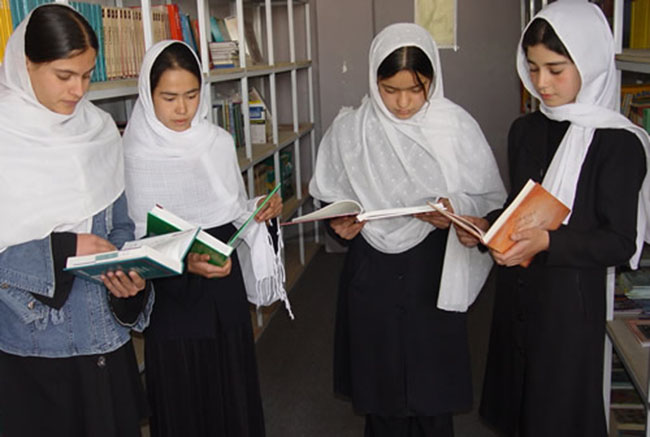Education, is one of the most influential tools overcoming poverty and raising standard of living; it produces human capital, one of the scarcest resources, for a nation. Although, Afghanistan has a good progress in the education sector, there is a marked difference between the enrolment rates between males and females in the country.
There are many barriers to female education in Afghanistan. Educating girls is critical for any country, especially for Afghanistan as a developing country, because it can improve its living standard. Also, educating girls, reduce their fertility rates and they can better manage childbearing.
In addition, more educated females seek earlier parental care when they are pregnant, an approach that can reduces maternal mortality. In terms of economic benefits, it helps the country to benefit from the labor and intellect of half of its population and can make GDP from another half of its population. Studies of N. D. Kristof and other researchers have shown that when females have income, that money is more likely to be put into saving, into the community, into the education, or into a family wellbeing and health than when that same amount of money is earned by a male.
Education sector had a good progress in Afghanistan since the Taliban regime was ousted in 2001 by the international Alliance under the leadership of the United States. Unfortunately, the pace of education progress, especially for females, saw a decline since 2014 when the international community decided to withdraw their troops from Afghanistan.
Challenges of Education of girls in Afghanistan
The first is cost. Although school is free according to the constitution, uniforms, textbooks, suppliers, and transportation can be expensive for some families. If the family is not able to pay for the education of all its children, preference goes to the boys due to the traditional norms of the society. Second, cultural perception towards gender inequality is one the strongest barriers to female education in Afghanistan. Traditional Afghan culture has a negative view on females who advance into higher educational levels in the country, especially in the rural areas. These communities focus on a subservient role for women, and discourage higher career pursuit for them. One of the strategies that the Afghan government and the international communitymay pursuit to change this attitude is putting emphasis on Islamic teachings in terms of education, such as the famous hadith of the Prophet Mohammad (PBUH), that says: “Seeking knowledge is a duty for all Muslims, men and women.” Another approach that may change this attitude in the rural communities is to emphasize the practical value of female education, such as the improved economic stability and increased family income with two working adults.
Third, Early marriage and teenage pregnancy also has a negative effect on female education, particularly for higher education of them. Often families may arrange a marriage for their daughter while she is still in her teenage years, and it interrupt their education path in most cases. The daughter may also become pregnant early.
Fourth, sexual health information is not widely accessible, and the lack of contraceptive use leads to a high level of pregnancy. Better education on sexual health information, increased access to contraceptives, and discouraging early marriage would help alleviate this barrier. Fifth, lack of security, is one of the critical barriers to all students in general and to the girls in specific. This problem is compounded with the traditional norms in the parts of the rural communities in Afghanistan. The terrorist groups have repeatedly warned the girls not to go to schools and have targeted the girls’ schools repeatedly. As a result, the number of girls has reduced significantly in the rural communities.
Afghanistan requires to find a solution to sociocultural perspectives on females’ education and insecurity threatening the whole country in general and the females in specific, especially in terms of education. Studying the security and education approaches of Islamic countries like Indonesia, Malaysia and Iran can help the country to cope with these endemic problems in a sustainable manner.
Education can play a vital role in development of a country. It enables a country to use the full labor potentials of all of its population that leads to poverty reduction significantly. The education sector of Afghanistan improved rapidly after the US and allies who ousted the Taliban regime. However, this trend decreased significantly after 2014, when the international community withdrew their troops from Afghanistan and also decreased their funds to the country. Girls’ education faces numerous barriers in Afghanistan, including economic, negative social attitude, early marriage, child marriage and lack of health of sexual health information. To enable half of the society, to realize its potentials, the Afghan government shall develop and implement a comprehensive strategy based on the lessons learned from the other countries having the same challenges like Afghanistan.
Home » Opinion » Barriers to Female Education in Afghanistan: Challenges and solutions
Barriers to Female Education in Afghanistan: Challenges and solutions
| Sakhi Rezaie

